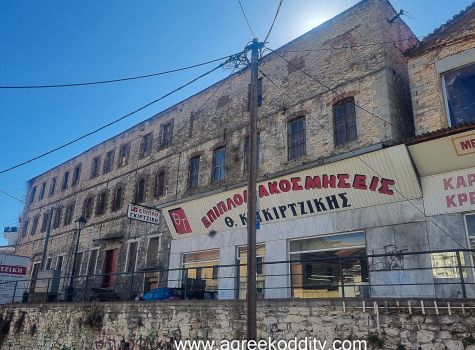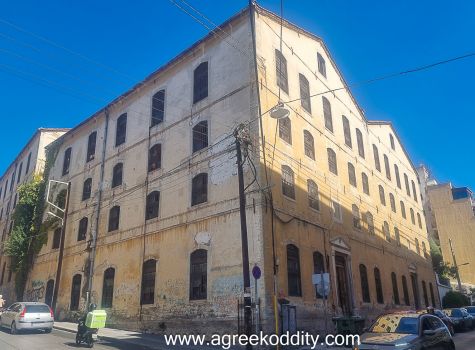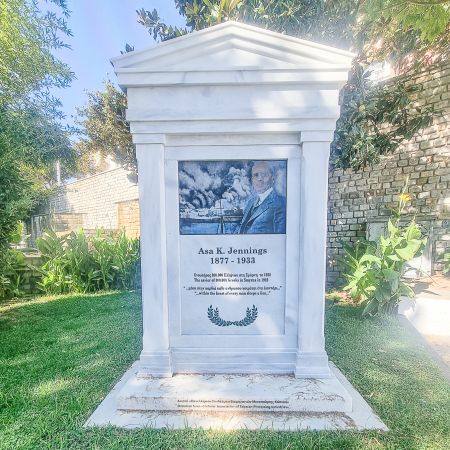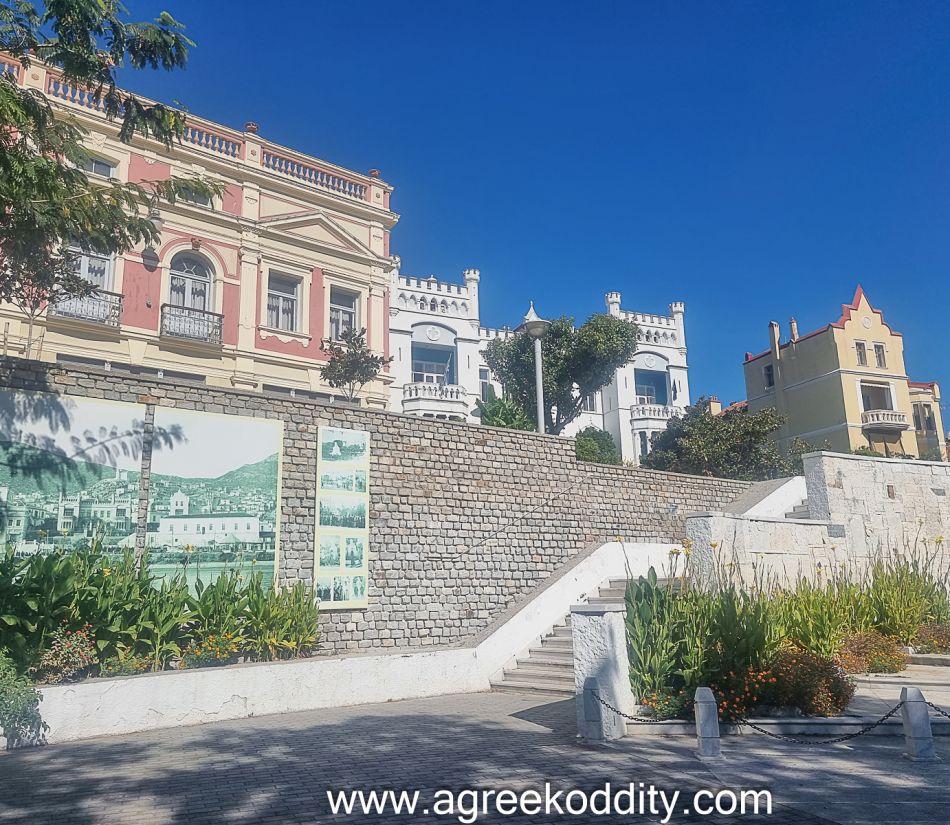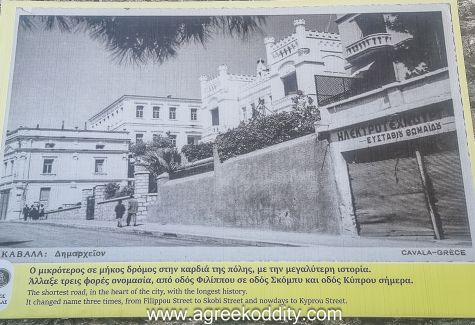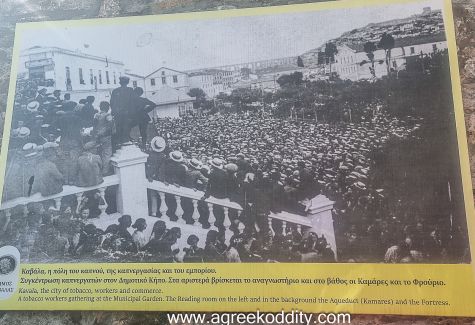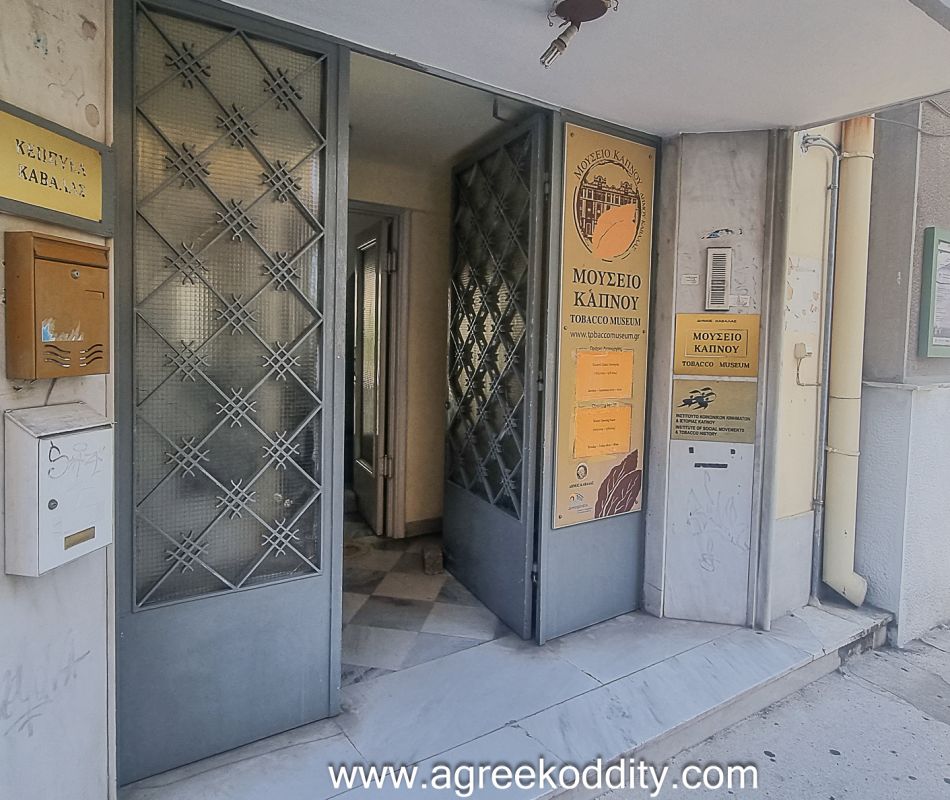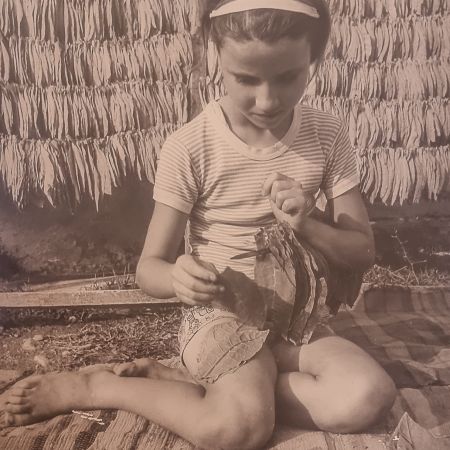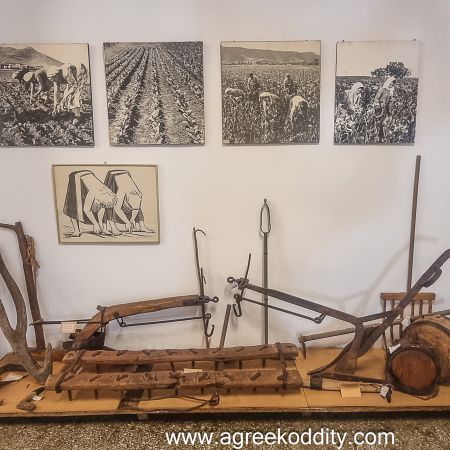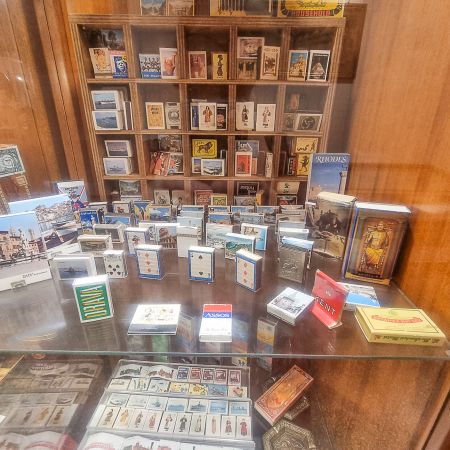Kavala – Tobacco Museum
After my visit to the very interesting Museum of Hellenic Refugees, I follow this up with a visit to the Tobacco Museum. Kavala was the most important tobacco processing city in the Balkans. The soil and climate in and around Kavala were ideal growing conditions for tobacco. At the time of the Ottoman occupation, Turks were forbidden from growing it and so fell to merchants of other nationalities to establish and run the production of the industry. However, the Ottoman rulers still had strict control over trade and prices of commodities such as tobacco. Foreign investors found this a hindrance to trade and profit-making.
Someone who did make a success of this trade was Hungarian businessman Pierre Herzog, a wealthy Jewish banker and grain and tobacco merchant. His company Herzog et Cie created a monopoly of the tobacco trade in Macedonia. Adolph Wix von Zsolnay a German Jew who served as the German and Austrian consul in the city managed Herzog et Cie. As the Ottoman Empire gradually declined in the late 19th and early 20th century, Herzog was one of the merchants responsible for liberalising the tobacco trade.
By the early 20th century, there were over sixty tobacco companies registered in the city, employing over six thousand people. Of the 262 tobacco factories that once stood in the city just 54 still stand including the Mpasterli Kioli Hodja Warehouse just through one of the arches of the Kamares aqueduct.
If you cross the road by the roundabout to the west of the harbour, you will come to the Municipal Garden of Heroes with the beautiful statue of Victory and Kavala Heroes in a central position. In the gardens, you will also find a monument to the hero Asa Jennings mentioned in my previous post.
Above the square are three striking buildings that you can’t fail to miss when walking to or from the town centre. The building to the left is the Great Club House, home to the Chess Club of Kavala. It was founded in 1910 by the Philoptochos Adelfotis Kyrion Kavalas (a women’s charity for the poor) to house the Club for the Greek Community of Kavala. The building itself is an exceptional example of Austrian baroque architecture.
The white building to the right of it is the Town Hall of Kavala and the former mansion of the aforementioned Pierre Herzog. It dates from 1890 and took a decade to build. Its gothic style with crenellated towers is reminiscent of a Hungarian castle. The building was purchased by the municipality in 1937 and houses the mayor and several administrative services.
The third building along the row is the Wix Building, the home and business premises of Adolph Wix von Zsolnay mentioned earlier. Again there are similar gothic features to the Herzog mansion. Now it is also home to the administrative offices of the Kavala Municipality.
If I’d been transported here blindfolded and had to guess based on the architecture where I’d arrived, Greece may not be my first guess!
Trying to find the Tobacco Museum should have been easy. I thumbed it into Google Maps which took me on a merry old dance. I knew that it was up by the Municipality Building of Kavala but it kept sending back down to ground level. In the end, I ditched Google Maps and just used my instinct to find it. I don’t have a good sense of direction but on rare occasions, common sense prevails.
After climbing the steps from the municipal gardens (again) I took the street between the Great Club House and the Herzog building. The side of the Great Club House is adorned with large vinyl banners of historical photographs which I always find interesting and again helps to give you a sense of a place.
At the end of the Great Club building, I take a left and soon after I stumble across a very non-descript building. But this is it – the Tobacco Museum of Kavala. I’d read somewhere that it is being temporarily housed so that may explain the lack of a distinct facade.
Once through the door, I find myself in what looks like an empty office and nearly turn around thinking that I may have entered through the wrong door. Then I noticed a large banner for the Tobacco Museum indicating that I have to enter through another set of doors, which I do.
Ah, this is more like it. To my right, there is a lady at a desk where I purchase my entry ticket. She hands me a leaflet and indicates that I take the exhibition in a clockwise direction.
The exhibit outlines the cultivation and processing of tobacco and in particular the variety known as oriental tobacco and this is the only museum in the world to do so. Oriental tobacco varieties including Basma, Basibagli and Kampa Koulak are well suited to the local soil and climatic conditions resulting in high yields. What is special about these varieties is that they are sun-cured which adds a richness to the colour and flavour of the leaves.
The process of cultivating oriental tobacco starts with collecting the seed, sewing the seeds in the nursery, planting out the seedlings, harvesting the leaves, needling the leaves (as seen in the photo below) and sun drying the leaves. The cultivation was back-breaking work and formed the basis for the integration of the refugee population into the country’s economy. I must admit that after my visit to the Museum of Hellenic Refugees, I’d expected to get more of a sense of terrible working conditions in the fields and the factories. Not like the picture below. However, I’d read that out of the tobacco industry, the first unions were formed and the first-ever strike in the Balkans took place.
Many women were employed in the tobacco warehouses because the packing of leaves into the elaborate packages that you can see below was suited to nimble fingers.
Other exhibits of interest are the collections of match boxes, cigarette packets and smoking accoutrements. I’m not a smoker but I do like nicely curated collections.
See below a very informative video about the development of the tobacco industry and how it saw Kavala develop from a small town into a large cosmopolitan city left with a rich and colourful legacy.

